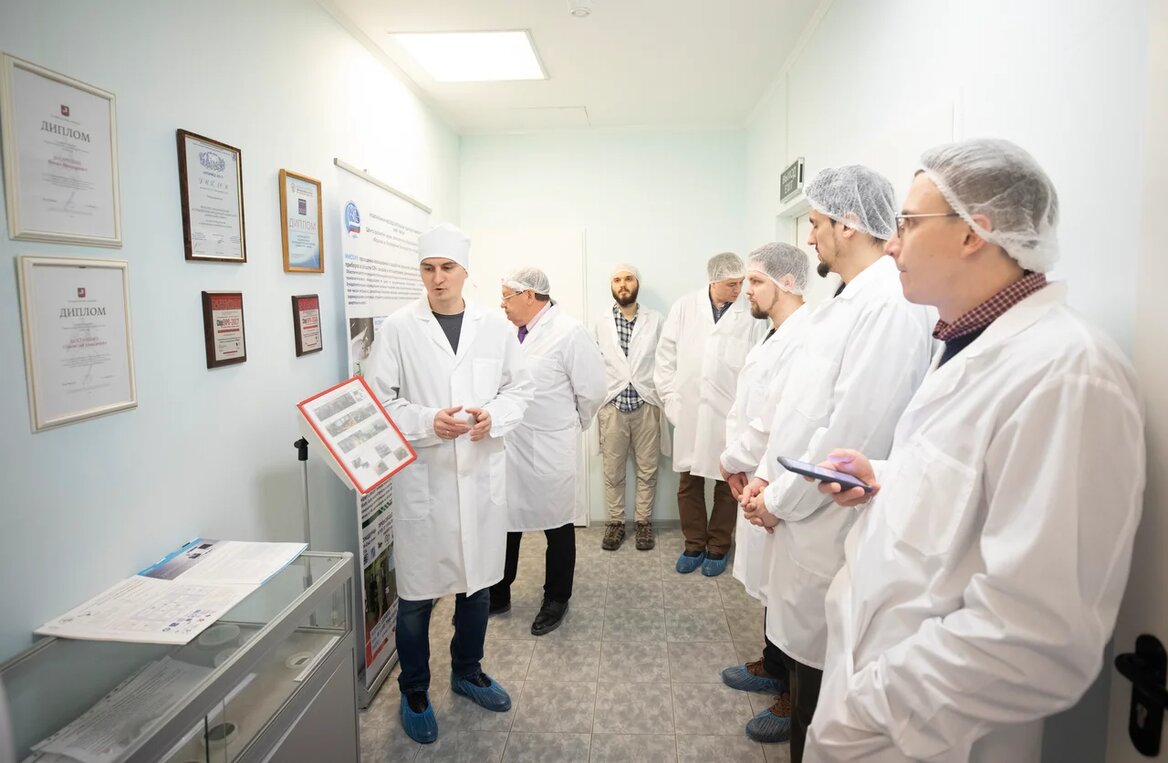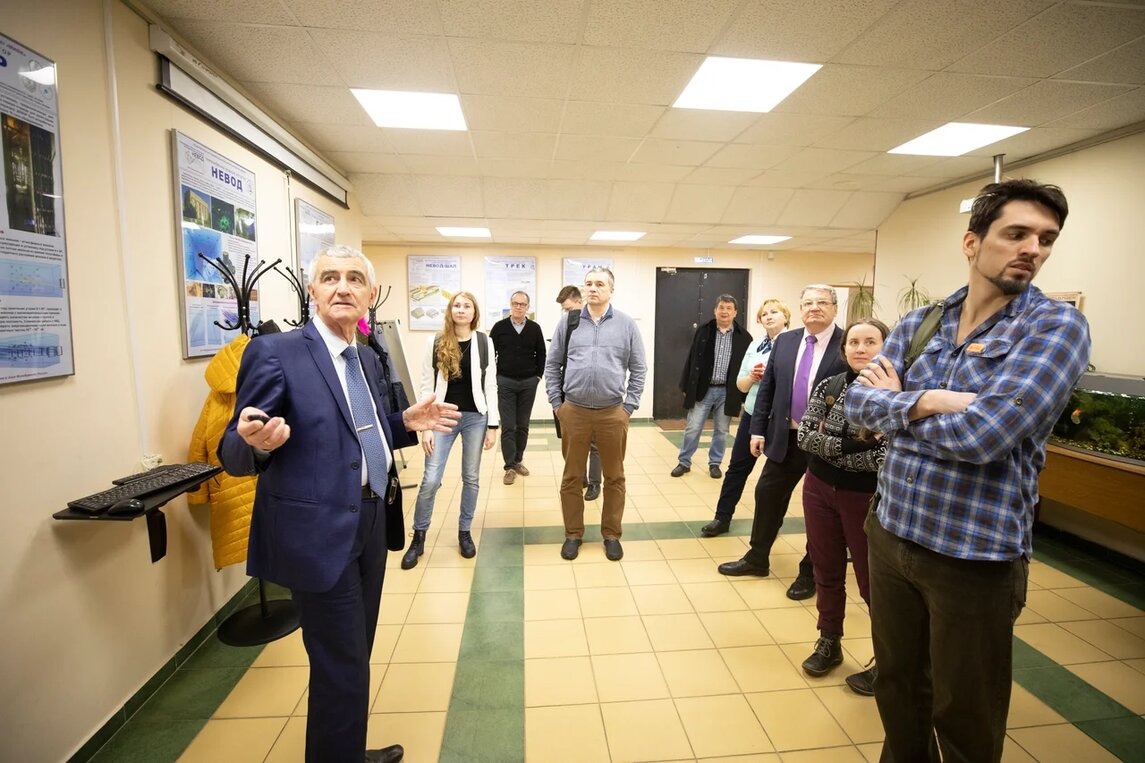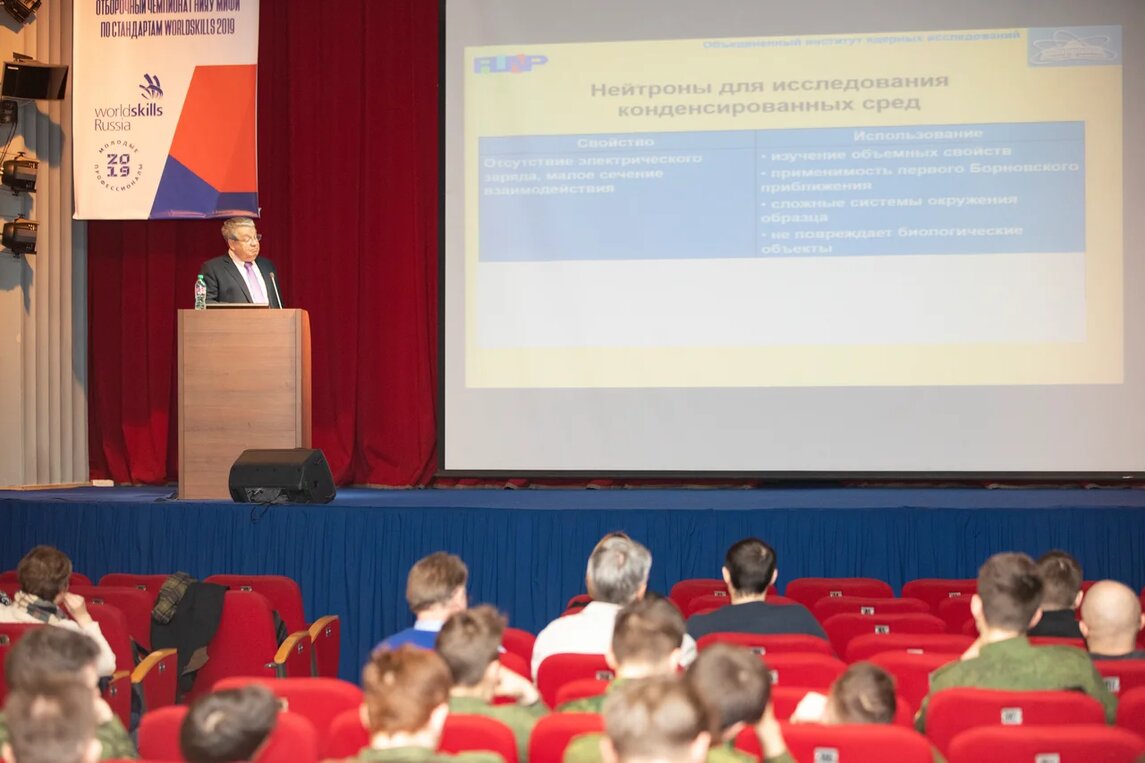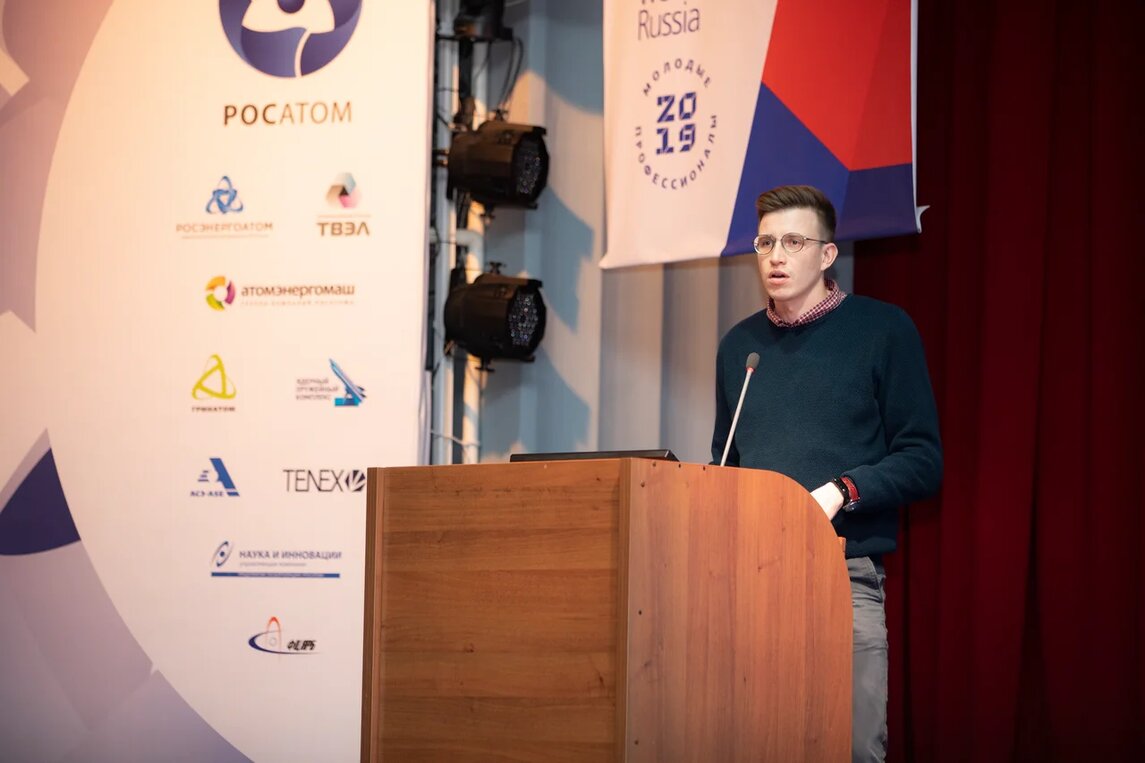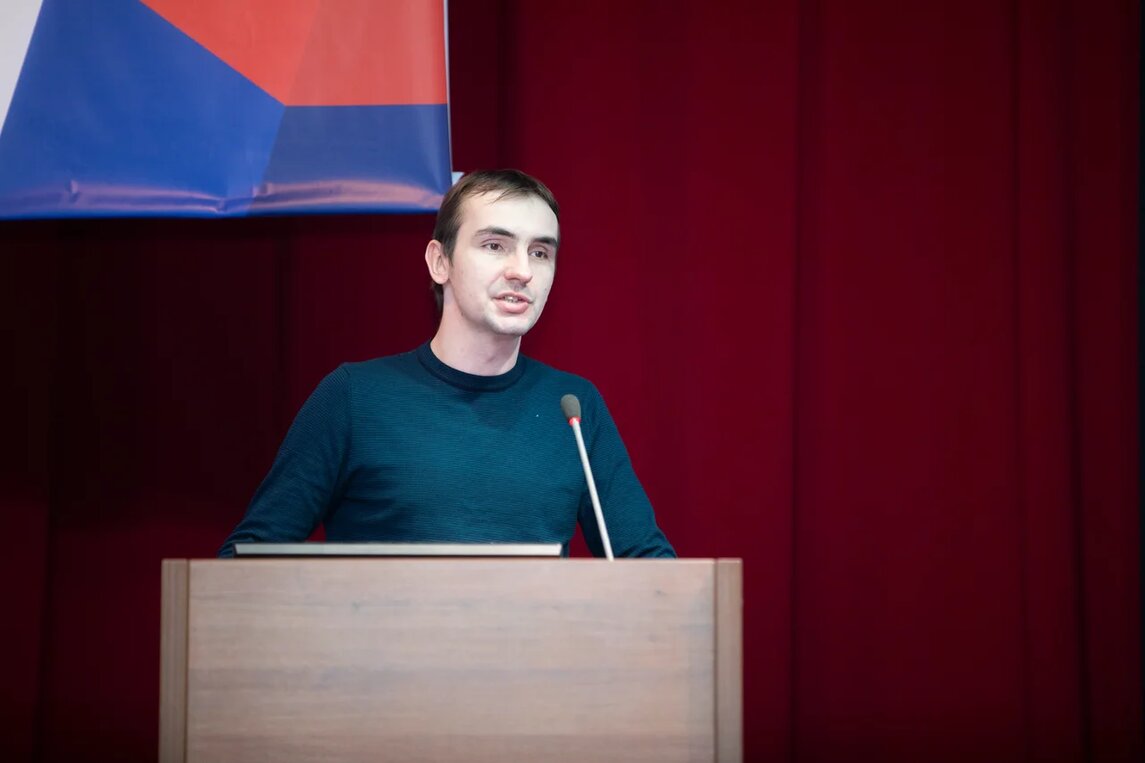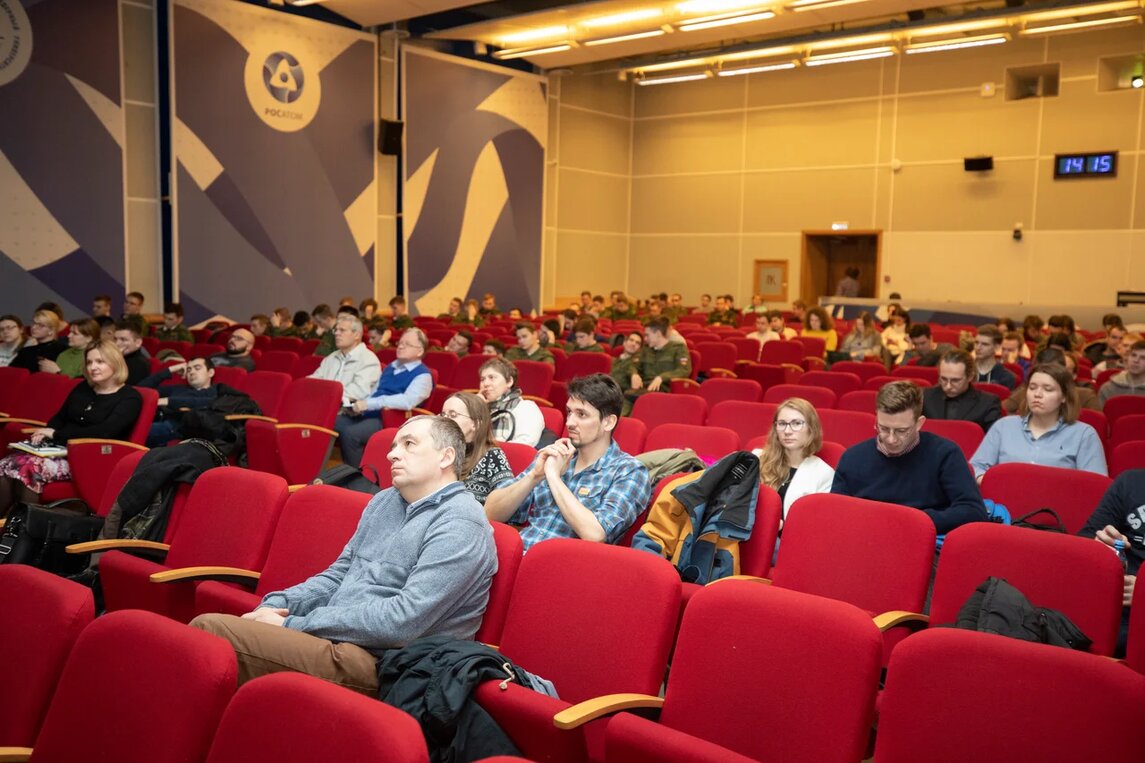AYSS delegation pays the return visit to MEPhI
News, 04 April 2019
On 29 March 2019, the delegation of the Association of Young Scientists and Specialists of the Joint Institute for Nuclear Research visited the NRNU MEPhI. It was a return visit. A group of MEPhI students came to Dubna for acquaintance with the NICA project on the Doors Open Day that was organized on 31 October 2018 in the Veksler and Baldin Laboratory of High Energy Physics.
The NRNU MEPhI is one of the first national research universities in Russia. The educational and research complex includes 57 buildings and sites in the territory of 19 hectares. The total area of educational and laboratory buildings is 96,000 square meters. More than 70 % of the teaching staff has scientific degrees and titles. The Institute has the unique laboratory basis, including the research nuclear reactor, the neutrino water detector of the pool type, heavy ion accelerators, the analytical laboratory and more than 100 educational and research laboratories.
In the frames of the visit, guests from Dubna were acquainted with some research objects. Head of the Design and Ultra-High Frequencies Laboratory of the Institute of Nuclear Electronics Roman V. Ryzhuk guided an excursion around the MEPhI nanocentre, one of the best in Russia complexes for carrying out research and designing developments in the fields of non-silicon electronics, new materials and devices. The Centre occupies 1,000 square meter territory and has 14 pure rooms. In fact, a closed production cycle with all necessary technological sites is created here. However, it is not batch production. The Centre designs electronic components and works out their manufacturing. The Dubna delegation learnt about some technological operations: production of the heterostructure, lithography, photoresist coating and its etching, dielectric coating, measurement of parameters of created devices and structures. The scanning tunnel microscope for research of nanostructures’ surface, the facility for vacuum spattering, the facility for plasma-chemical etching were shown to the guests in the Centre.
The second excursion was guided by Anatoly A. Petrukhin, Head of the unique “NEVOD experimental facility” that has been operating since 1995. NEVOD is the only in the world facility that allows conducting fundamental and applied research using natural particle beams on the surface of the Earth within the whole angle intervals and the record energy diapason of 1 – 1010 GeV. The facility is the 9х9х26 meters sized pool filled with water around which the detecting equipment is placed. The Cherenkov water detector, the URAGAN hodoscope, the coordinate-tracking detector DECOR, the system of calibration telescopes, the prototype of the detector for measurements of atmosphere neutrons, the equipment for meteorological observations, the ALICE-SCTM station and others are used in the facility.
The second part of the visit was devoted to talks with students and postgraduates. Several lecturers from JINR told participants of the meeting about the Institute’s conducted research and projects. Senior Lecturer of the MEPhI Department of Condensed Matter Physics, Head of the MEPhI group for participation in the BM@N and MPD projects Arkady V. Taranenko presented the reporters. He noted: “I studied at MEPhI but concluded my education in Dubna, I prepared my graduation work there. In the difficult 1990s, it influenced at the decision to stay in science.” He recommended to everyone to visit the international scientific centre in Dubna.
The first lecture was delivered by Head of the FLNP Department of neutron research and developments in the fields of condensed matter Alexander V. Belushkin, MEPhI graduate of 1979. The lecture considered types of research carried out in JINR using neutron beams to study condensed matter. It also considered cooperation with other organizations aimed to study the structure of the matter using non-destructive methods: geologists, archeologists, and the museum staff. Head of the FLNP Sector for research on neutron and nuclear interactions Yuri N. Kopach read the lecture “Neutron nuclear physics” in which he presented the structure of this science and considered in detail one of its major aspects. The lecture by Researcher of the LRB Radiophysiology Sector Yuri S. Severyukhin “Is the flight to the Mars possible? Radiation barrier in space flights” was dedicated to long-term space flights, dangers of manned flights, the impact of the space radiation on bodies of astronauts and possible ways to solve these problems in the future. Konstantin V. Gerzenberger, computer coordinator of the BM@N experiment in VBLHEP, MEPhI graduate of 2006, read the lecture “Software for BM@N and MPD (NICA) mega science experiments”. In the way of conclusion of the meeting, the lecturers answered the questions of students and teachers and expressed their preparedness to establishment of closer contacts between JINR and MEPhI.
Galina Myalkovskaya, JINR Weekly Newspaper
photos by MEPhI press-office
